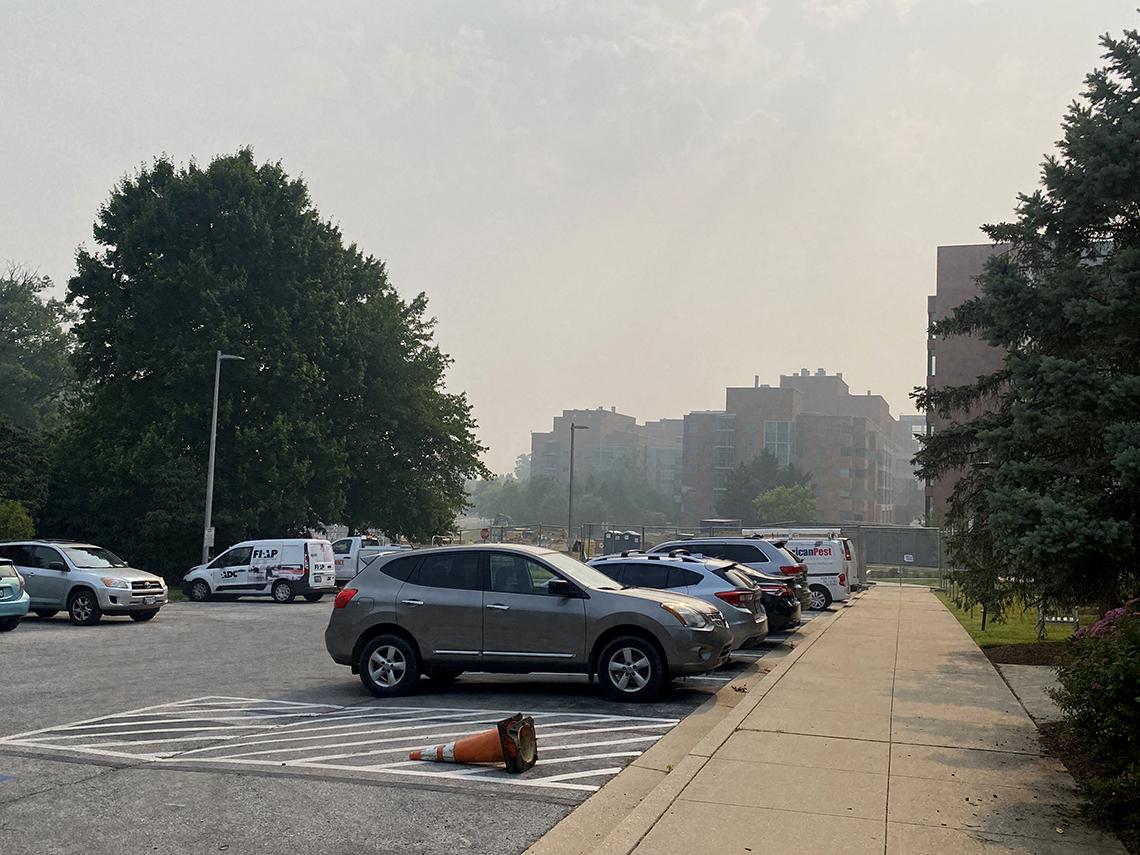Smoke Signals Poor Air Quality
NIH Worksites in D.C. Region Feel Effects of Wildfires in Canada
NIH’ers in mid-Atlantic areas on June 7-8 likely noticed the hazy, smoky conditions that blanketed much of the eastern U.S., tingeing the sun an eerie red and making the outside air hazardous to breathe. The smoke was swept southward from more than 100 active wildfires in Quebec, Canada.
Employees on the Bethesda campus reported the palpable scent of smoke and hazy skies. The air quality index (AQI) peaked there around 220, which falls into the Code Purple “very unhealthy” category, according to the Metropolitan Washington Council of Governments. It was the first time ever that the D.C. region recorded a purple code for fine particle pollution. At this level, health risks are elevated for the general public and people should avoid spending time outdoors.
The AQI measures the amount of pollution in the air. It is rated on a scale of 0-500, with levels below 100 deemed safe for the general public. The main component of wildfire smoke is fine particulate matter (PM2.5), tiny particles measuring less than 2.5 micrometers in diameter. These particles are so small that they can be inhaled deep into the lungs and can even pass into the bloodstream.
To monitor the AQI in your area, visit AirNow.gov.—Amber Snyder




